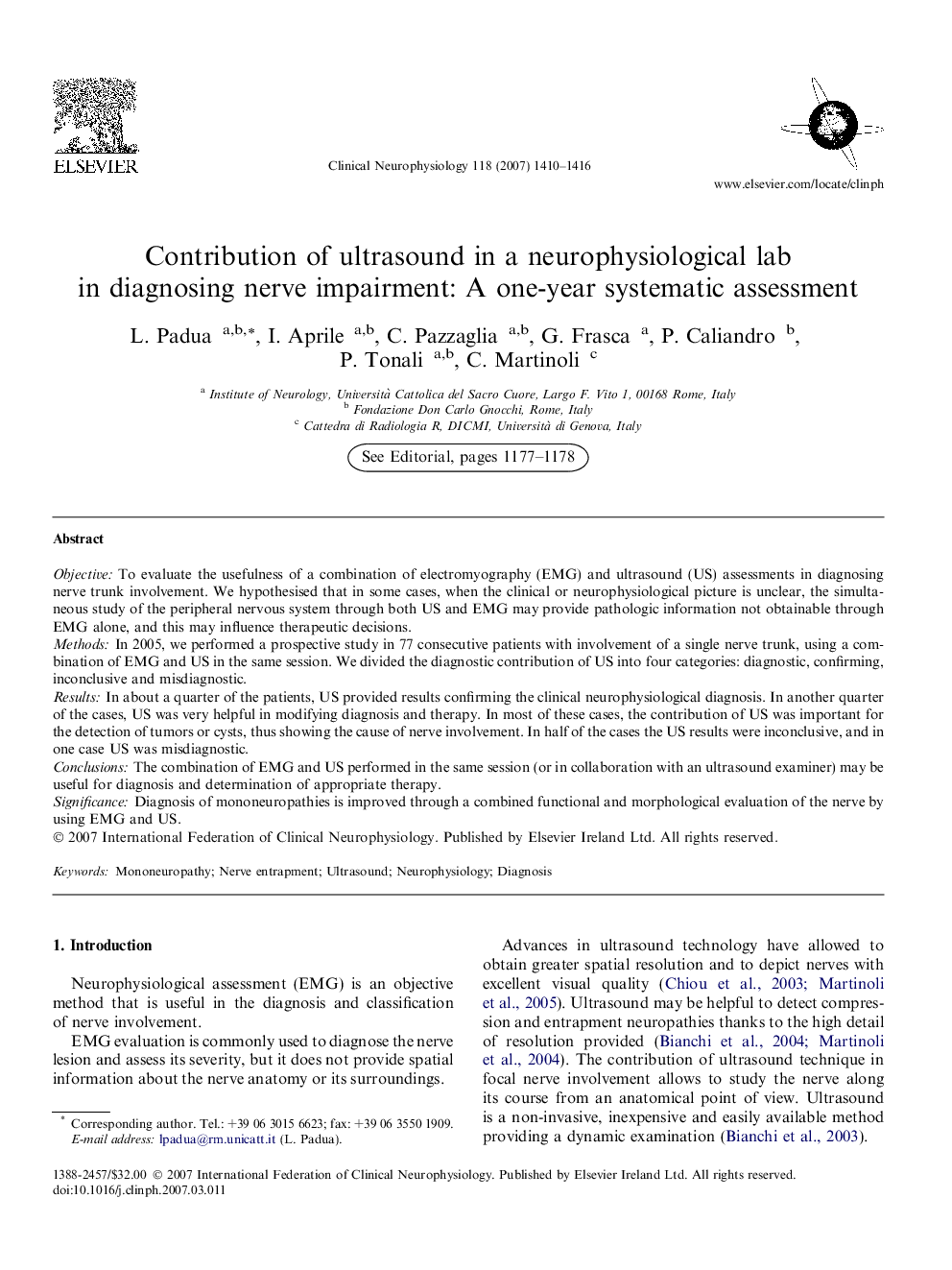| Article ID | Journal | Published Year | Pages | File Type |
|---|---|---|---|---|
| 3047717 | Clinical Neurophysiology | 2007 | 7 Pages |
ObjectiveTo evaluate the usefulness of a combination of electromyography (EMG) and ultrasound (US) assessments in diagnosing nerve trunk involvement. We hypothesised that in some cases, when the clinical or neurophysiological picture is unclear, the simultaneous study of the peripheral nervous system through both US and EMG may provide pathologic information not obtainable through EMG alone, and this may influence therapeutic decisions.MethodsIn 2005, we performed a prospective study in 77 consecutive patients with involvement of a single nerve trunk, using a combination of EMG and US in the same session. We divided the diagnostic contribution of US into four categories: diagnostic, confirming, inconclusive and misdiagnostic.ResultsIn about a quarter of the patients, US provided results confirming the clinical neurophysiological diagnosis. In another quarter of the cases, US was very helpful in modifying diagnosis and therapy. In most of these cases, the contribution of US was important for the detection of tumors or cysts, thus showing the cause of nerve involvement. In half of the cases the US results were inconclusive, and in one case US was misdiagnostic.ConclusionsThe combination of EMG and US performed in the same session (or in collaboration with an ultrasound examiner) may be useful for diagnosis and determination of appropriate therapy.SignificanceDiagnosis of mononeuropathies is improved through a combined functional and morphological evaluation of the nerve by using EMG and US.
